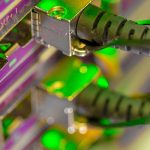At Cisco Live EMEA in Amsterdam, Cisco unveiled several new AI and data center infrastructure products, tackling the pressing energy demands that AI workloads impose on existing systems. This issue has been on everyone’s mind since ChatGPT gained popularity in late 2022.
John Pettigrew, CEO of National Grid, predicted a drastic sixfold increase in data center power needs by the mid-2030s due to AI. A recent RAND report projected that AI-driven computing could add 68 gigawatts of power demand globally by 2027—almost equal to California’s total electricity consumption—and more than 325 gigawatts by 2030.
Tom Gillis, a senior vice president at Cisco, highlighted that we’re reaching a critical turning point. Building data centers that can support the demands of the AI era requires significant power. During a conversation with Computer Weekly, Jeetu Patel, Cisco’s executive vice president and chief product officer, emphasized the company’s focus on sustainability and efficiency.
“Our products are becoming more efficient in terms of power usage,” Patel stated. However, he cautioned that if users start running numerous AI workloads due to this improved efficiency, the rise in overall power consumption could negate those gains. “We need AI to achieve intelligent outcomes,” he explained. “Once we get there, AI can help us tackle many of our power and sustainability challenges.”
When asked about how a potential second Trump administration, with its support for fossil fuels and withdrawal from the Paris Agreement, would impact Cisco’s sustainability efforts, Patel noted it’s too soon to gauge the long-term effects. Still, he acknowledged the tech industry’s current struggle with limited compute and energy resources, especially considering AI’s appetite for power.
He believes we’ll see significant breakthroughs that will cut computing costs and lower power consumption. For instance, DeepSeek might prove beneficial for the environment by training models more efficiently and at lower costs. This could enable the creation of many more models without the hefty power bill traditionally associated with their development.









